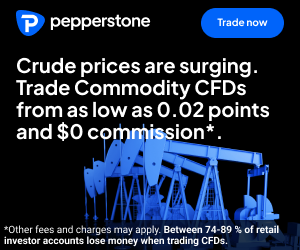ActivTrades combines the robustness of its proprietary platform with FCA regulation and additional fund coverage, ideal for experienced traders.
REVIEW OF GOLDMAN SACHS: INVESTING ON THE ASX
Thinking about investing in the ASX but not sure where to kick off? This article walks you through who this broker is, how they operate in Australia, and what services they offer to get you started.
We’ll also explain how to open your account, what kind of instruments you can trade, and what to keep in mind when you’re new to investing. A straightforward, Aussie-friendly guide to help you enter the market with confidence.

How to Invest in the ASX with Goldman Sachs
Goldman Sachs Australia provides institutional clients with premium access to equity markets, including the ASX. With offices in Sydney and Melbourne, it plays a key role in major capital markets activity and corporate advisory.
ASX investment with Goldman Sachs is done via its institutional trading desk, typically by fund managers, pension funds, or large-scale investors. It also provides top-tier economic and equity research coverage.
Goldman Sachs is ideal for sophisticated investors who value global reach, strategic execution, and access to exclusive deals within Australia’s financial markets.
What Are Stockbrokers and How Do They Work?
In Australia, stockbrokers are licensed financial professionals or firms who execute buy and sell orders for securities such as shares, exchange-traded funds (ETFs), bonds and options on behalf of clients. These brokers operate through the Australian Securities Exchange (ASX) and are regulated by the Australian Securities and Investments Commission (ASIC).
Brokers play a central role in helping Australians invest and grow their wealth. Brokers provide access to the financial markets and offer services tailored to your needs. Here's how they operate:
Trading Shares and Other Assets: Stockbrokers place trades for ASX-listed equities, ETFs, REITs, government and corporate bonds, derivatives and more. Orders can be made online or over the phone depending on the broker’s platform.
Licensing and Oversight: All brokers must hold an Australian Financial Services Licence (AFSL) issued by ASIC. This ensures they follow the law, meet conduct standards and protect investor funds and information.
Retail and Institutional Clients: Brokers cater to a wide range of clients — everyday Australians, SMSFs (self-managed super funds), corporates, and institutional investors. Most provide both execution-only and full-service models.
Advisory and Research: Full-service brokers offer personalised advice, portfolio management, and company research. They help clients build strategies aligned with their risk tolerance and financial goals.
Primary and Secondary Market Access: Clients can participate in IPOs, capital raisings, and trade securities in the secondary market with real-time access via trading platforms or mobile apps.
Clearing and Settlement: All trades on the ASX are cleared through ASX Clear and settled via CHESS (Clearing House Electronic Subregister System). Your shares are held under your Holder Identification Number (HIN), giving you legal ownership.
Fee Structures: Brokerage fees vary depending on whether you're using an online discount broker or a traditional full-service firm. Some charge flat fees, others use percentage-based commissions.
Tradable Instruments on the Australian Securities Exchange
ASX offers a wide range of tradable instruments that serve the needs of retail investors, institutional participants, and corporates across the country.
It provides access to equity, debt, derivative, and structured investment products through the following key instruments:
Equities (Shares): The ASX lists thousands of Australian companies across various sectors including banking, mining, biotech, retail, and energy. Investors can trade both ordinary and preference shares, which may provide dividends and potential capital growth. Share trading is conducted via the ASX Trade system and settled through CHESS (Clearing House Electronic Subregister System).
Exchange-Traded Funds (ETFs): ETFs listed on the ASX offer exposure to indices, commodities, bonds, currencies, and global markets. They are popular among Australian investors for their low cost, transparency, and liquidity. ASX-listed ETFs track benchmarks such as the S&P/ASX 200 or MSCI World Index, among others.
Bonds and Fixed Income Securities: Investors can access Australian Government Bonds, corporate bonds, hybrid securities, and other debt instruments via the ASX. These products provide regular interest payments and are suitable for those seeking income and capital preservation. Some bonds are directly tradeable on the ASX, while others are accessed through listed managed funds or exchange-traded bond units.
Listed Investment Companies (LICs): LICs are closed-ended funds traded on the ASX that invest in a portfolio of shares, property, or other assets. Unlike ETFs, LICs have a fixed capital structure and may trade at a premium or discount to their net asset value. They are commonly used for long-term wealth building and income.
Real Estate Investment Trusts (A-REITs): A-REITs give investors access to property assets such as commercial buildings, retail centres, and industrial estates without direct ownership. They are listed on the ASX and typically pay distributions from rental income, making them attractive for income-focused investors.
Options and Derivatives: The ASX offers exchange-traded options (ETOs) on selected equities and indices, as well as futures contracts through ASX24. These instruments are used to manage risk, enhance returns, or speculate on market movements. Derivatives trading requires a good understanding of leverage and margin requirements.
Warrants and Structured Products: Warrants listed on the ASX allow investors to gain leveraged exposure to shares, indices, or commodities. Structured products, often issued by banks, include instalment warrants, MINIs, and barrier warrants. These are suitable for experienced investors looking for advanced strategies.
mFund (Managed Fund Settlement Service): The ASX mFund platform allows investors to buy and sell units in unlisted managed funds using the same infrastructure as listed securities. This gives Australians access to professionally managed investment strategies with the convenience and safety of ASX settlement systems.
YOU MIGHT ALSO BE INTERESTED







